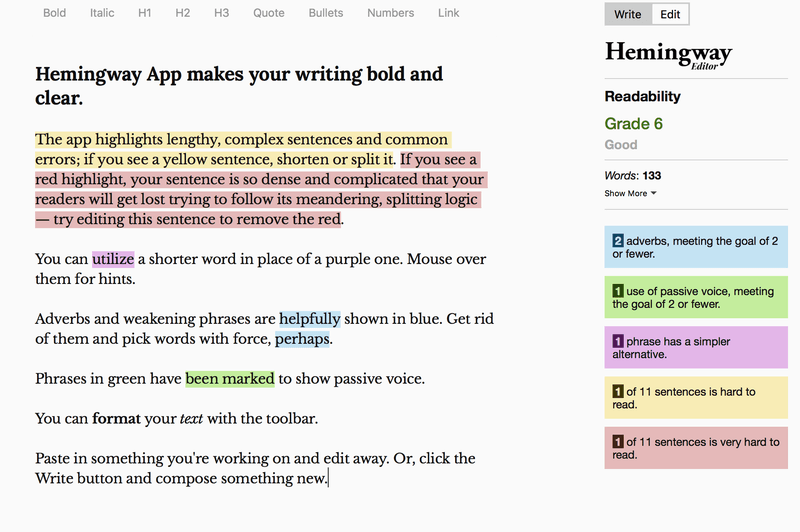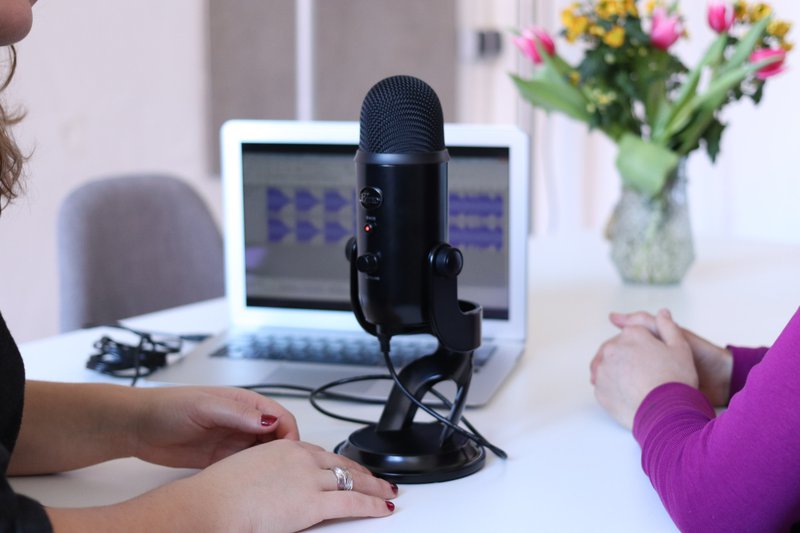Creación de contenidos: Cómo crear contenido de calidad de forma consistente como pequeña empresa
Masterclass de marketing de contenidos: Quinta parte
Necesito confesarte algo.
¿Recuerdas todos esos beneficios del marketing de contenidos de los que hablamos en la primera entrega de esta Masterclass? El impulso en los rankings SEO, el aumento del tráfico, los mejores leads? ¿El hecho de que el contenido te ayuda a construir confianza y autoridad?
Well, that was only part of the truth. You see, only valuable, relevant, quality content will do that for you. What’s more, it will only have those benefits if you create it over and over and over again – consistency is key.
Como pequeño equipo de, bueno, uno, sé que después de todo ese estrategizar, tormenta cerebral y planificación, esforzarse de verdad para crear ese contenido de calidad es un trabajo jodidamente duro. Y con la presión añadida de tener que crear algo que haga babear a tu audiencia, puede resultar increíblemente intimidante.
What you need is a blueprint for creating quality content – which is exactly what I’ve got lined up for you. So roll up those sleeves and learn how to create great content that will help you build a prosperous brand.
This post is Part Five in a brand spanking new Masterclass Series on Content Marketing. We believe it’s an incredibly important topic – and according to a little survey we did, you do too. Trouble is: there is so much content on content marketing out there (talk about meta) and a lot of the intel is conflicting.
Te traemos esta Masterclass en colaboración con Anouck Meier, Chief Storytelling Officer en Ampersand. Anouck es un copywriter de conversión y un estratega de marketing de contenidos que ha trabajado con numerosas marcas, grandes y pequeñas, para ayudarles a alcanzar sus objetivos de negocio a través de contenidos estratégicos. Vamos a aclarar la historia del contenido de una vez por todas en una guía completa. ¿Listo para sumergirte?
- Jeroen Corthout, Cofundador Salesflare, un CRM de ventas fácil de usar para pequeñas empresas B2B.

Calidad, no cantidad
Anyone can create mediocre content. Some would argue the internet is one huge pile of mediocre content. Creating content that has been published, republished, recycled and repurposed a million times is easy – but it will do nothing for your business.
On the contrary – it could hurt your cause. 😳
I’ve said it before, and I’ll say it again: content marketing is like dating. You never get a second chance to make a first impression. If you’re meeting your in-laws for the first time, you’re not going to show up with a stained sweater, slightly tipsy and only ready to talk about the weather, are you?
Except that’s what so many businesses do when they publish content that is stuffed with keywords and only slightly informative. Content that hasn’t considered the audience’s needs, is outdated, full of spelling or grammar mistakes, inaccurate or plain wrong.
No sólo ahuyenta a los lectores (y clientes potenciales), sino que también molesta a los motores de búsqueda.

By now it’s a hard rule in content marketing law: Sólo un contenido bien elaborado y de alta calidad puede generar audiencia, confianza y fidelidad.
La calidad de sus contenidos también está estrechamente relacionada con la aceptación de su marca en los motores de búsqueda. Invertir en contenidos de calidad es hacer un favor tanto a su público como a los motores de búsqueda.
When you’re putting content out there, be prepared to show up and give it your best shot.
Bring your mother-in-law a box of chocolates or a bottle of wine and come prepared to woo her with your witty remarks and thoughtful compliments. You’ll be melting hearts (and opening customers’ wallets) in no time. 😍
But hang on – what is quality content?
OK, so great content helps you earn the attention of the people who need your product or service. But how do you define “quality” content?
Does it boil down to metrics like “Time On Site” or bounce rate? The number of backlinks your blogpost acquires over time? The extent to which it goes “viral” on social media?
You could probably make an argument for all those elements (and a lot of marketers do). The problem is: these are all elements that are appraised only after you create and share your content. They’re hardly helpful while you’re down in the trenches, creating content.
What you need is a way of knowing that the content you’re creating for your business will be effective in terms of building authority and winning the trust of customers.
Over the years, while working with numerous entrepreneurs, companies and organisations in developing content that attracts a loyal audience, I’ve been able to distill the characteristics of content that works – and content that falls flat.
Estas son las cuatro reglas por las que juro para crear contenidos de calidad.
Norma #1: Establecer la autoridad
If you want to stand out with your content and create a competitive advantage, you should create content you’re uniquely qualified to make. Write about those things you’re an absolute expert in and dare to dive deep – don’t just scratch the surface.
Make clear, compelling points and show readers you know what you’re talking about.
By the way: your content creation should showcase your expertise, but that doesn’t mean you have to know everything about anything. Reach out to experts and ask them to write guest blogs (like this one!).
Regla #2: Sea preciso
You know what’s even worse than mediocre content? Fake news.
Now, I’m not suggesting that all content creators who are putting out mediocre content are injecting fake facts in their content intentionally (although, unfortunately, some definitely do and they’re often paid to do so). However, some people just refuse to do their homework.
If you’re going to create content that actually gets read, you definitely should!
- Research whatever you’re writing about.
- Utilice fuentes fiables.
- Compruebe si su información es objetiva, está respaldada por datos y/o investigada.
- Una opinión no es un hecho.
- Y no todo el mundo es experto.

Regla #3: Que sea relevante
Recuerdas lo que dije sobre el pecado capital del marketing de contenidos?
Avoid the trap of creating egocentric content and focus solely on what is meaningful and relevant to your ideal reader. As you’re creating content, ask yourself:
- ¿En qué medida es útil para mi público?
- How strongly does it apply to where they’re currently at?
- ¿Estoy proporcionando una orientación clara sobre los pasos que deben dar para alcanzar su objetivo o resolver su problema?
- ¿Estoy respondiendo a sus preguntas mejor y de forma diferente que los demás?
- ¿Les estoy demostrando que sé exactamente lo que necesitan?
Regla #4: Ayúdales a actuar
Your audience is hungry for your expert vision – but they’re not looking for an encyclopedia on any particular subject. They just quieren saber qué hacer.
Often times, they’re looking for just enough information to help them take the next step or make a decision. Help them take action toward their goals: break it down for them in bite-sized chunks and provide concrete, actionable tips and advice.
Proceso de creación de contenidos
Now that you know what to aim for with your content, let’s take the guesswork out of the actual content creation process.
1. Escribir
I’m going to talk about the writing process because … well, that’s what I do most of the time. Refer to the section on content formats below for other types of content like podcasts and videos.
Sea lo que sea, el proceso de creación sigue unas reglas bastante similares:
- Crear para un lector y sólo un lector. Don’t try to write for anyone who may just be interested. This will force you to focus on your ideal reader, use their language and tailor it to their specific needs.
- Same goes for what you’re writing about: ceñirse a un mensaje central o idea. Evite salirse por la tangente o intentar explicar una plétora de ideas en un solo contenido.
- Put the benefit of your content where it can’t be ignored: the “what’s in it for me” should be immediately obvious from reading the title (and the intro).
- Haga que su contenido sea fácil de consumir: don’t make your reader hunt down the information they’re looking for. Use titles, subtitles, short paragraphs, bullets,… to structure your writing and guide them through it.
- Inteligente sobre claro. You want your reader to relate to you and get value from your content. What you don’t want is overwhelming them with jargon or overly complicated concepts. Don’t make them work hard to understand what you’re saying (because if your message isn’t immediately obvious, they’ll click away in a heartbeat).

Need more guidance on actually writing your content? In Part 6 of this Masterclass, we’ll take a deep dive into writing copy.
2. Investigación SEO
SEO has come a long way – search engines are doing a much better job at understanding and processing how we communicate.
They’re actually starting to speak human – which is great news for every content creator who’s focusing on good writing (rather than on stuffing their content with keywords and sounding like a robot).
Good writing is key but that is not to say that including a couple of keywords in strategic places won’t help you rank well. Which means more eyeballs on your content. 🤓
La investigación SEO también le ayudará a determinar si merece la pena invertir en un tema o palabra clave específicos, mostrándole el volumen de búsquedas y lo difícil que es competir por esa palabra clave concreta.
Este es el aspecto de un proceso básico de investigación SEO:
- Anota algunas preguntas que podría tener tu lector ideal en función de sus luchas y sus objetivos.
- Realice una investigación de palabras clave en torno a esas preguntas. Utilice herramientas de investigación de palabras clave, como Google Keyword Planner, KWfinder, SEMRush, Moz Keyword Explorer o Ahrefs. Escriba su palabra clave en Google y tome nota de las consultas autocompletadas. O simplemente desplácese hasta el final de la página y consulte la sección de búsquedas relacionadas en las páginas de resultados del motor de búsqueda (SERPs).
- You’re looking for keywords that have significant monthly search volume (MSV) and a reasonable keyword difficulty, corresponding to your domain authority. If you haven’t been blogging for long and your domain authority is still low, the best thing to do is to target long-tail, low-volume keywords (200-1000 MSV) with minimal keyword difficulty (<30). This will give you a good chance at ranking for keywords and getting your content in front of your audience.
So once you have your first draft ready, check that you’ve covered the following:
- Utilice su palabra clave en título
- Incluya su palabra clave o frase clave en un H2
- Make sure the keyword appears at least once in the body of the post (but don’t overdo it!)
- Utilizar texto alternativo de la imagen (incluyendo la palabra clave cuando proceda).
And that’s all really – it doesn’t have to be more complicated than that.
3. Edición de
Before editing your piece, it’s always a good idea to walk away. Just let it sit there for a while, let it marinate and come back to it with clean eyes.
Release attachment and forget that it’s actually you who has written the piece. As an editor, you should have no problem editing the piece to produce a more coherent and interesting post.
Si no puede, como diría Stephen King, kill your darlings, considere la posibilidad de que un miembro del equipo o un editor externo revise su trabajo.
Cuando por fin vuelvas a tu borrador, céntrate en la legibilidad, el SEO, las llamadas a la acción, los enlaces, la ortografía y la gramática. Algunas herramientas que te ayudarán a reducir el tiempo de edición son Grammarly y Hemingway Editor.

Look out for active voice, clear language, short sentences and paragraphs and plenty of whitespace. Remember to review past content for opportunities to link to your post once it’s published.
Mientras el contenido aún está fresco en su mente, escriba algunas entradas para la promoción en las redes sociales y para su boletín electrónico.
Añade imágenes o, al menos, una imagen destacada eficaz: se ha demostrado que añadir una te da más clics, más favoritos y más comparticiones sociales. Echa un vistazo a sitios como Unsplash o Pexels para fotos y luego utiliza una herramienta como Canva o Visme para dar el toque final. Si necesitas imágenes más personalizadas o únicas para tu proyecto, puedes utilizar un generador de imágenes como Picsart, que puede ayudarte a crear imágenes con facilidad.
4. Publicación
Isn’t publishing just hitting a button and being done with it? Yes and no. If you’re just starting out, it can be a matter of uploading your piece immediately. Or, you can try to maximize its impact by scheduling it for an optimal time.
If you’ve been at it for a while and you’re committed to a regular publishing schedule, your audience will expect to see your posts coming out at specific times – you should definitely try to stick to it!
If you have a lot of content to publish, it’s probably a good idea to invest in a content planning tool, as we’ve discussed in part 4 of this Masterclass.
Or if you want to automate and streamline the publishing process, opt for a tool like Story Chief (that’s what we used to write, publish and distribute this post). Some companies prefer to use a CMS platform that can store, manage, and publish bulk content like blogs, videos, and website landing pages.
Don’t forget to link to the blog post from past content and to schedule your social media content too.
Por último, revise los análisis en los días siguientes, al cabo de una semana y al cabo de un par de semanas para evaluar el rendimiento.
Creación de otros formatos de contenido
Blog posts are a great place to start with your content marketing, as they have a very low barrier to entry. You don’t need a designer or any special equipment. You hardly need any technical knowledge. Just start writing and you’re good to go.
A lot of the guidelines for written content apply to other types of content too. Let’s take a look at the specifics of putting together some other popular content formats: videos and podcasts.
Creación de vídeos
Según una investigación reciente, 51% de los profesionales del marketing de todo el mundo nombran el vídeo como el tipo de contenido con mejor ROI. El vídeo social genera 1200% más compartidos que el texto y las imágenes juntos.
However, if you don’t consider yourself the next Casey Neistat or if you don’t have a dedicated video team like Gary V, the idea of producing video may seem overwhelming and intimidating.
But rest assured – you don’t need (a lot of) specialized gear or a studio. Lord knows those cat videos that draw millions of viewers haven’t exactly been through professional production processes. 😼 If you can tell a compelling story, it doesn’t matter if you shoot it on your iPhone or a professional camera. There are even fully customizable after effects templates that you could try out!
You don’t even need a script – but you do need a plan: just think about what you’re going to say and prepare a few bullet points to structure your video. Don’t forget to include a call to action at the end!
Por último, añade subtítulos , ya que la mayoría de los vídeos se ven sin sonido.
Producción de podcasts
Los podcasts siguen estando de moda. Ofrecer tus contenidos en formato de audio atraerá a una parte de tu audiencia que puede preferir escuchar contenidos en lugar de leer largas entradas de blog.
Puedes empezar a producir tu propio podcast sin esforzarte demasiado.
- Reúne tu equipo. Una configuración básica de podcasting consiste en un micrófono y un software para grabar tu voz. Recomiendo utilizar un micrófono USB externo (frente al micrófono incorporado del ordenador), una interfaz de audio y software de grabación profesional.
- Encuentre a sus invitados o esboce sus propios episodios. Instead of writing an outline for a blog, you’re now making outlines per podcast episode. If you’re doing an interview-style show, gather a list of guests and put together a template outreach email.
- Edita tu podcast. Full transparency – I’m in my third season of podcasting now and I still haven’t edited a single episode. Luckily, there are tons of affordable options for hiring a sound engineer or podcast producer to stitch your episodes together. All you really need is 4 files: your main audio file or interview, an intro, outro, and a jingle.
- Salga y hágase oír. You now have a podcast episode that’s ready to be uploaded to iTunes, Spotify, Grapadora, SoundCloudo en cualquier otro lugar y promocionado junto con el resto de su contenido.

Mantenga la coherencia
Content creation is a marathon – not a sprint. 🏃♀️
Para cosechar los beneficios del marketing de contenidos, sea constante en sus esfuerzos, comprométase con su calendario de contenidos y su plan de creación de contenidos.
If you’re a small team, get organized so you’ll work as effectively as possible.
Crea por lotes tus contenidos para ser más productivo y busca ayuda cuando la necesites: contrata a un gestor de contenidos, un editor o un redactor. Trabaje en equipo con socios y consiga la colaboración de blogueros invitados. Si escribir te parece agotador, recurre a un servicio de transcripción y habla tu contenido (o pide a tu asistente que te entreviste y te escriba un resumen).
Creating a sustainable content creation process that you can stick to over time requires a lot of work and effort. Hey – if it was easy, everyone would do it. But if you get it right, you’ll be well ahead of the pack.
¿Cómo es su proceso de creación de contenidos? ¿Es coherente? Háznoslo saber en los comentarios.
And don’t forget to check back next week for Part Six of our Content Marketing Masterclass about writing copy!

Esperamos que te haya gustado este post. Si es así, ¡difúndelo!
👉 Puede seguir a @salesflare en Twitter, Facebook y LinkedIn.
if(window.strchfSettings === undefined) window.strchfSettings = {}; window.strchfSettings.stats = {url: “https://salesflare.storychief.io/content-creation?id=1166271153&type=2”,title: “Content Creation: How to Create Quality Content Consistently as a Small Business”,id: “b4bf56dd-9b24-4318-a472-b8522fe85e05”}; (function(d, s, id) { var js, sjs = d.getElementsByTagName(s)[0]; if (d.getElementById(id)) {window.strchf.update(); return;} js = d.createElement(s); js.id = id; js.src = “https://d37oebn0w9ir6a.cloudfront.net/scripts/v0/strchf.js”; js.async = true; sjs.parentNode.insertBefore(js, sjs); }(document, ‘script’, ‘storychief-jssdk’))- Medir el ROI del marketing de contenidos: Show Me The Money - 10 de octubre de 2019
- Repurposing Content: 4 Easy Ways to Get More Out of Your Content - 3 octubre, 2019
- Los diez mandamientos de la distribución eficaz de contenidos - 26 de septiembre de 2019
